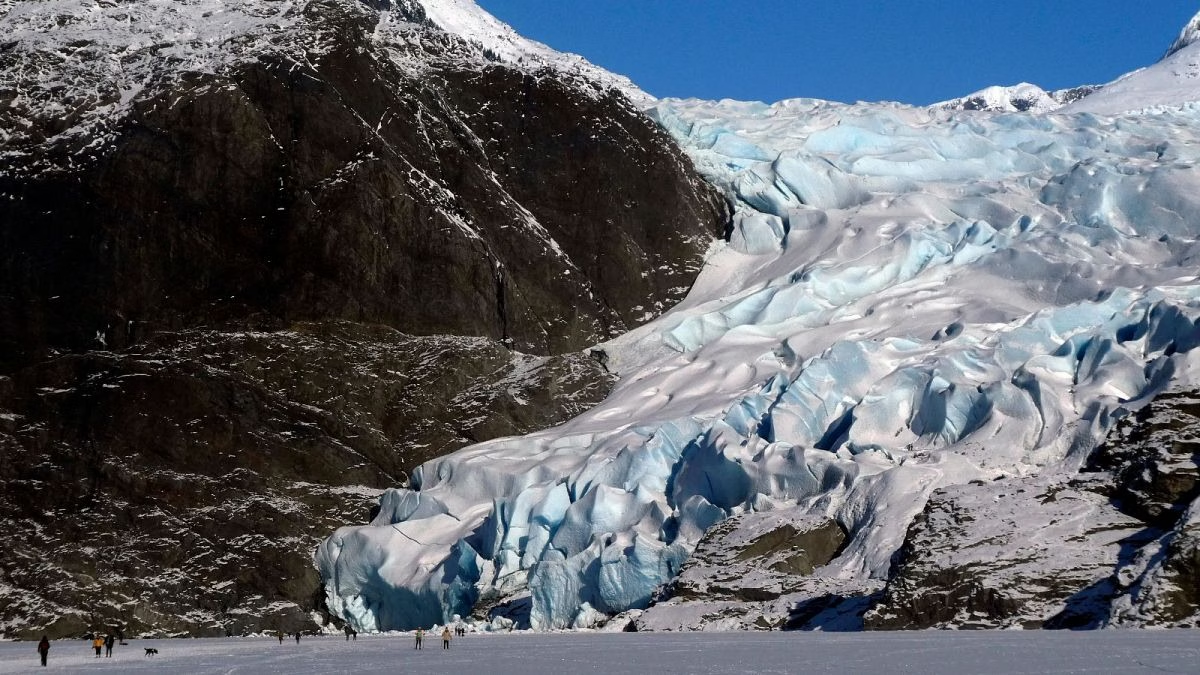The preceding six years have experienced some of the most significant glacier retreat rates ever documented, with the exception of one year.
The world is commemorating the first-ever World Glaciers Day, an initiative of the UN aiming to draw attention to these rapidly vanishing icy terrains.
According to the World Glacier Monitoring Service (WGMS), glaciers have lost 9,000 billion metric tons of mass since the record-keeping began in 1975.
This weight loss is equivalent to an ice block the size of Germany, with a thickness of 25 meters, as detailed by the service’s director, Prof. Dr. Michael Zemp.
As the planet continues to warm, the rate of glacier loss is intensifying. The World Meteorological Organisation (WMO)’s report on the State of the Global Climate reveals that from 2022-2024, glaciers underwent their most substantial three-year mass loss to date.
“The seven most negative mass balance years for glaciers have occurred since 2016,” says WMO Secretary-General Celeste Saulo, referring to the difference between ice gained from snowfall and ice lost due to seasonal melting.
The UN agency warns of the potential “avalanche of cascading impacts” from the melting of glaciers, including flooding, water scarcity, and sea-level rise. Saulo emphasizes that preserving glaciers is not just environmentally, economically, and socially critical; it is also a matter of survival.
What does the depletion of ‘global water towers’ mean for people?
There are over 275,000 glaciers worldwide, covering around 700,000 square kilometers and along with ice sheets, they hold approximately 70% of the world’s freshwater resources.
As the WMO describes it, high mountain areas function as the world’s water towers. The decline of glaciers jeopardizes the water supplies of hundreds of millions of people who live downstream and rely on the steady release of water stored over winter during the hottest and driest seasons.
In the short term, melting glaciers increase the risk of natural disasters such as floods. In the long term, glaciers are the second-largest contributor to the global sea-level rise, following the warming of the oceans.
According to a recent study by an international consortium of researchers known as the Glacier Mass Balance Intercomparison Exercise (GlaMBIE), glaciers contributed 18 mm to the global sea-level rise between 2000 and 2023.
“This may not seem significant, but it has a substantial impact: each millimeter of sea-level rise exposes an additional 200,000 to 300,000 people to annual flooding,” Zemp points out.
GlaMBIE found that from 2000 to 2023, glaciers lost an average of 5% of their remaining ice, but this loss varied widely from region to region, with Central Europe experiencing the highest loss of up to 40%.
Where are glaciers most threatened?
WMO and WGMS caution that many glaciers in Western Canada and the US, Scandinavia, Central Europe, the Caucasus, New Zealand, and the Tropics are at risk of complete melting.
The 2024 hydrological year represented the third consecutive year in which all 19 glacier regions experienced net mass loss, with glaciers in Scandinavia, Svalbard, and North Asia experiencing their most significant annual mass loss on record.
Initiated during the International Year of Glacier Preservation, the first World Glacier Day on March 21 aims to raise awareness of the critical role glaciers, snow, and ice play in the climate system and hydrological cycle.
This year, a particular glacier stands in the spotlight. The South Cascade Glacier in Washington, US, has been selected as the first ‘Glacier of the Year’ to honor the splendor of these icy landscapes and the commitment of glaciologists who study them.
South Cascade Glacier embodies the beauty of glaciers and the long-term dedication of scientists and volunteers who have collected direct field data to measure glacier mass change for over six decades, as stated by Caitlyn Florentine, co-investigator of the glacier from the US Geological Survey.
Continuously monitored since 1952, it provides one of the longest uninterrupted records of glaciological mass balance in the Western Hemisphere.





